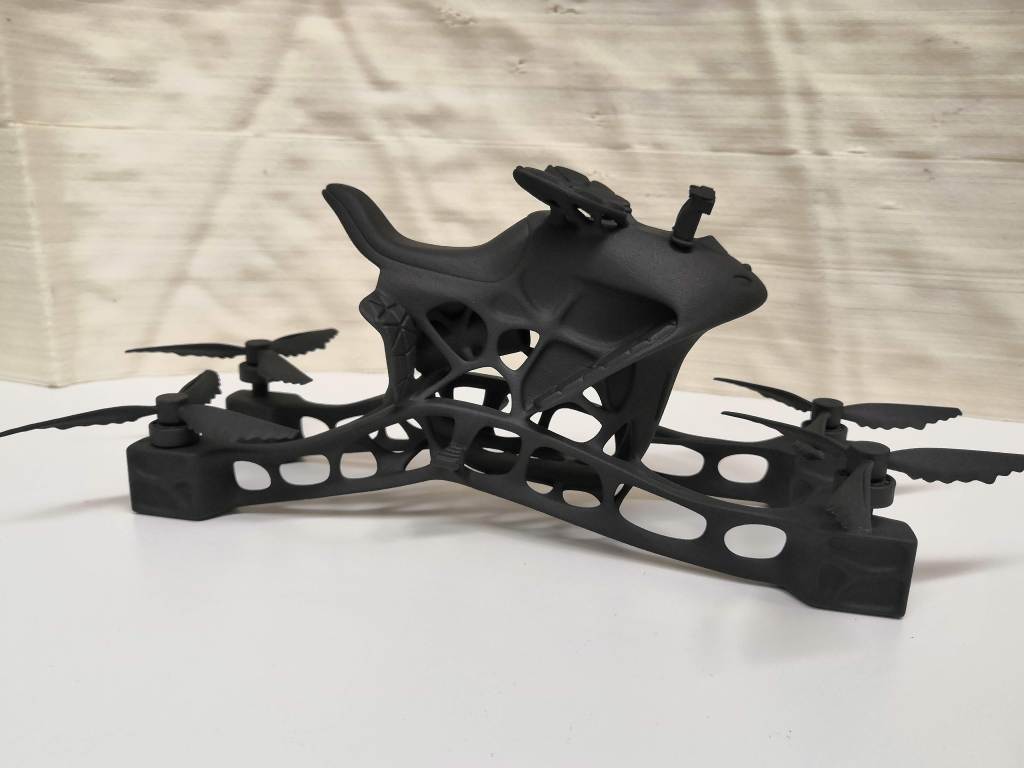What is the next generation of 3D printed products?
When the first applications of commercial 3D printing emerged, they were mostly about appearance models and prototypes. These are still, and will be, powerful and valuable applications in many businesses. During the past 10 years we have seen radical development in design tools, materials, 3D printing technologies and skills. 3D printing is now serious and reliable manufacturing method for end products, product series and spare parts in all industries. We have 3D printed products that are beautiful, optimized in many ways and serve perfectly for the intended purposes.
Is this the end of evolution? Not even close! We only start to have a good platform to imagine the future systems, after practising the technology basics and having a vague understanding of what we can make. So, here is my vision for the next generation products, made with the help of 3D printing.
“The future is already here – it’s just not evenly distributed.
– William Gibson –
Examples
- Interactive products will merge different technologies seamlessly, and interact with the user, system or environment in many levels. This future window is cracked open by Anouk Wipprecht. Products like Spider Dress or Proximity Dress show how products can sense and react to data or different signals from the environmnent.
- Personal amplifiers will give new capabilities to people. Paralympian athletes already use 3D printed prosthetes and appliances to support with a given sport, for example to run faster with spring-like artifical legs. Exosceletons are used to help lifting heavy weights. When this opportunity develops to the next level, we will build products that give us strength, better senses or capabilites never seen before. In the future we may have bionic olympics that drive the development of personal amplifiers in the same ways as Formula 1 races drive the development of better cars.
- New vehicles. In 1950’s the dream of a flying car emerged. Now we start to have manned drones. There are many obstacles slowing down the wider adoption, such as manufacturing cost, safety, regulation and non-existing traffic management systems for these small manned vehicles. Putting obstacles aside, let’s just ask, is it doable to make low cost flying vehicle? The concept was presented by Janne Kyttänen in his vision about 3D printed manned drone. By using suitable materials and careful optimized design, the body of the vehicle can be 3D printed in few hours with a large format 3D printer. The rest is about putting electronics, motors and other components automatically in place.

The making of functional products
The next generation products will be based on strong systemic view. It is not about having perfect components, optimized for specific features, such as cooling or minimizing materials, but about justifying the whole reason for a product the be realised. We can make optimized components for an airplane for saving weight, or we can design new categories of sustainable flying vehicles.
The next generation products will gracefully ignore the boundaries of sciences. Rich multidisciplinary knowledge is applied to achieve the goals, such as making technology products that react with biosignals and apply artificial intelligence to perform better in a certain social context.
We will master the whole spectrum of available materials. Already today 3D printers can use an unbelievable range of materials, from living cells to tailored metal alloys. New materials emerge practically every day with amazing features. Making of the next generation functional products is not about if there is suitable materials available, but being able to define which features we want want to have in the products.
Strategic guidelines
What steps we should take towards the next generation functional products?
Collaboration is the key. Now we simply need to take collaboration into new levels. This happens by global ventures, connecting individuals, teams and developers with the help of smart development platforms. Facilitating trust between stakeholders is a mandatory activity.
Maximize creativity and imagination. Development projects are often defined by business case or ROI. The are often justified, but to maximise creativity and innovation we need more value based motivators. We, as humans, get fundamentally motivated by other things than money, especially when we face the opportunity to create radically new.
Extreme multidisciplinarity. As mentioned earlier, we need to ignore the boundaries of sciences. Products and systems of the future use the best of what humans or nature have ever invented. A powerful way to guide the development is to establish global development funds that require connecting sciences in unexpected ways. In local level great examples are, for example, hacker and maker communities, such as biocurious.org, which are based on citizen science, curiousity and co-learning.
Lets’ make it.
Pekka Ketola, February 18, 2021
CEO 3DStep Oy & Ideascout Oy. Innovator. LinkedIn
Paluuviite: The sport of 3D printing – FinMed3DPrint Network